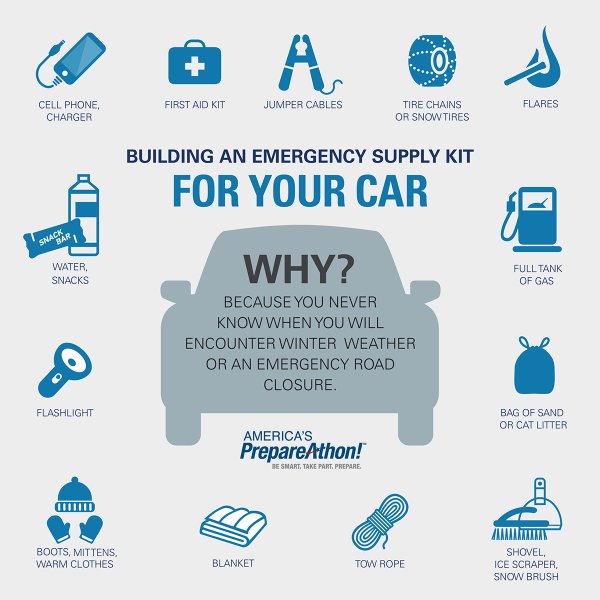(NewsNation) — Millions of Americans across the nation are bracing for a massive winter storm in the midst of busy holiday travel.
Despite forecasters’ warnings of heavy snow, freezing rain and flooding, nearly 102 million Americans will drive to their holiday destinations, according to AAA.
So, how should you prepare your car for severe winter weather? The first step is getting an inspection to make sure your car is road ready.
Check tire pressure
AAA recommends drivers get their tires checked for proper pressure and tread wear.
According to the National Highway Traffic Safety Administration, the risk of skids and spinouts increases on worn tires.
To check for wear, do the quarter test: Insert a quarter into the tread, with Washington’s head upside down. If you can see the top of his head, it’s time for new tires.
In areas with heavy snowfall and ice, snow tires on all four wheels provide the best traction.
If you’re planning to drive anywhere where it may snow, AAA recommends drivers have tire chains that fit properly and that they know how to properly install and remove them.
Refill fluids
Before getting on the road, make sure all fluid levels are full.
AAA recommends drivers check their oil level and top off fluids with cold-temperature versions.
If you live somewhere with frequent freezes, AAA recommends emptying your windshield wiper reservoir and refilling it with fluid designed for winter to prevent the reservoir or hoses from freezing over and cracking.
You’ll also want to use the recommended 50:50 ratio of water to coolant to keep your radiator from freezing when temperatures are below zero.
Test your car’s battery
If your battery is three years old or older, schedule a time to have it professionally tested.
If you’re not sure how old your battery is, or you have indications that it’s defective, it’s best to replace it before it’s completely dead.
In addition, keep jumper cables in your car at all times and practice using them, in case you need to revive a dead battery. You may also want to invest in a portable jump starter, which allows you to jump-start your car without another vehicle present.
AAA also recommends requesting a technician look at the timing belt, wiper blades, heater and headlights to make sure they’re in proper condition.
Drivers should also make sure the gas tank is full to avoid ice in the tank and fuel lines.

The National Weather Service (NWS) urges drivers to make sure their vehicles are stocked with the supplies they need in case of a winter emergency.
According to the NWS, drivers should winterize their vehicles and prepare a winter storm survival kit including:
- Mobile phone, charger, batteries
- Blankets/sleeping bags
- Flashlight with extra batteries
- First-aid kit
- Knife
- High-calorie, non-perishable food
- Extra clothing to keep dry
- Large empty can to use as an emergency toilet, tissues, toilet paper and paper towels
- Small can and waterproof matches to melt snow for drinking water
- Sack of sand or cat litter for traction
- Shovel
- Windshield scraper and brush
- Tool kit
- Tow rope
- Battery booster cables
- Water container
- Candle and matches to provide light and in an emergency, lifesaving heat.
- Compass and road maps, don’t depend on mobile devices with limited battery life
In general, it’s also important to plan ahead when traveling in winter weather, allowing yourself plenty of extra time to make a trip safely or staying home if you can.
“Slow down, that’s the best thing you can do. Your reaction time — the slippery road, you just cannot stop on a dime,” David Corrado, a 20-year-veteran of trucking, told NewsNation.
NewsNation affiliate WXIN contributed to this report.

